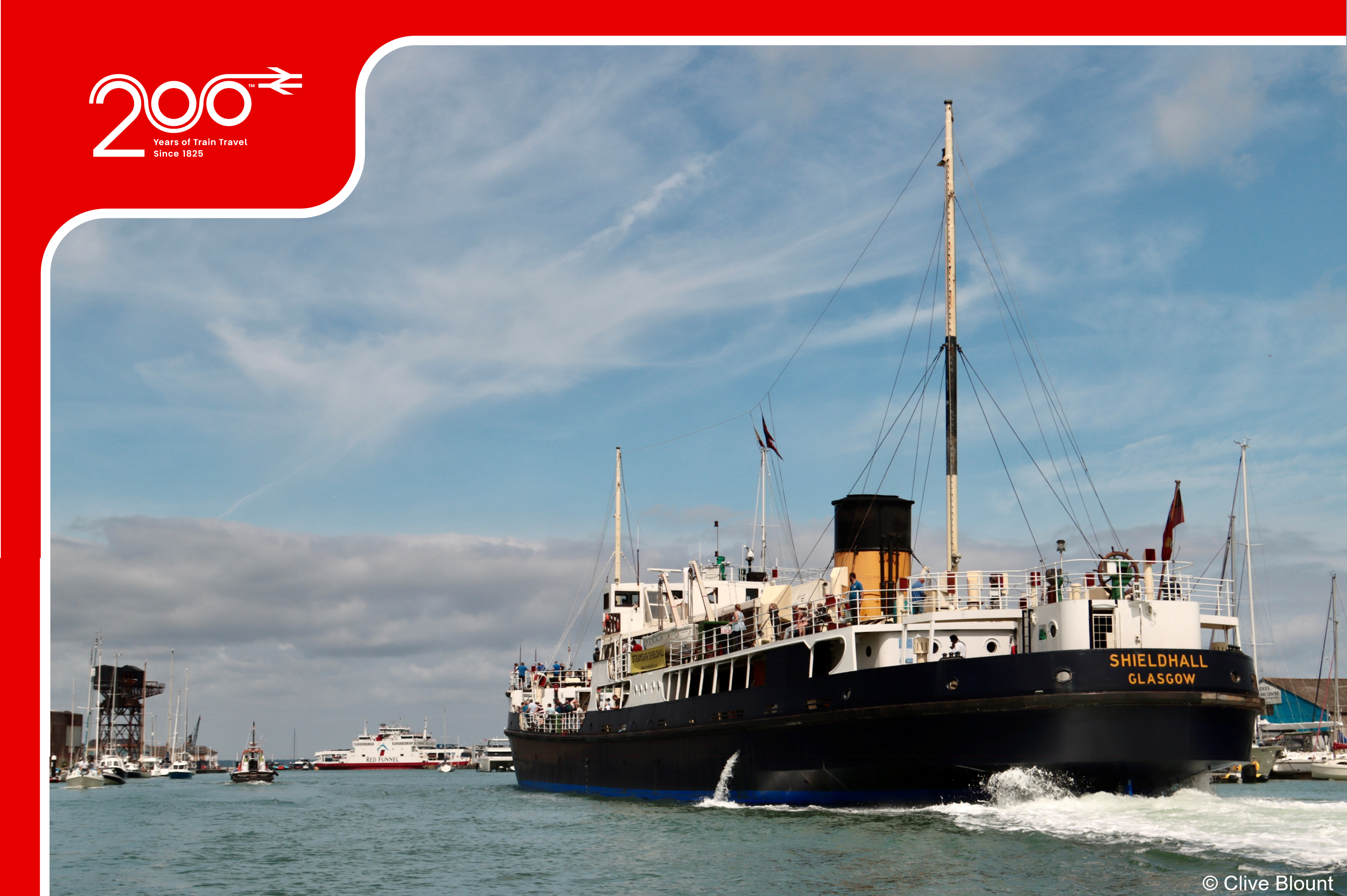Welcome to Railway 200 Fridays! As more and more vessels gear up for their working season, we wanted to use this and the next couple of entries to highlight how different heritage craft still engage with the Railway today and what events are being hosted to celebrate the 200th anniversary of modern rail. This month, we’ll be looking at Steamship Shieldhall, a vessel on the National Historic Fleet.
SS Shieldhall was built in 1955 at Renfrew for Glasgow Corporation, and she originally had a dual purpose. In the same way as her namesake predecessor, she would transport treated sewage sludge down the River Clyde for disposal in deeper waters. Vessels in this trade, would often also take passengers for a day excursion as part of their working trips, a tradition dating back to the First World War, when they would invite soldiers convalescing from their injuries to come onboard. As such, Shieldhall is fitted with passenger accommodation and leisure areas for this dual role, along with the large tanks required to haul treated sewage. Interestingly, her triple expansion steam engines have a similar configuration to earlier vessels such as the Titanic, and these were operated in sight of passengers aboard.
Shieldhall worked on the Clyde between 1955 and 1976, and in 1977 she was purchased by Southern Water Authority to do the same role on the Solent, between Southampton and an area south of the Isle of Wight. In 1985, due to rising fuel costs, she was laid up, at which point her future was in question. Luckily, as a result of an initiative by the Southampton City Museum, a preservation society, the Solent Steam Packet Ltd, was set up, and in 1988, Shieldhall was acquired for £20k.
Today, Shieldhall is still based out of Southampton, providing trips along the Solent throughout the summer months. She is owned and operated entirely by volunteers and provides a remarkable example of steam technology afloat. This August 23rd, they will be hosting a special cruise highlighting steam and how it connects rail and maritime heritage, with a particular emphasis on its presence in Southampton. Being one of the most important ports in the country, the Port of Southampton was serviced by rail from early on through the Southampton Terminus railway station, built in 1840. Servicing both the commercial shipping berths as well as excursion and ferry vessels in the city, the railway in Southampton fulfilled a dual role towards cargo and passenger transport – much like Shieldhall herself!
If you are interested in joining this one-off cruise in honour of RAIL 200, with the chance to explore Southampton’s connection with rail and steam in detail, find more information and how to book here. Next month, we will have a look at another steam vessel with associations to Rail, see you then!

